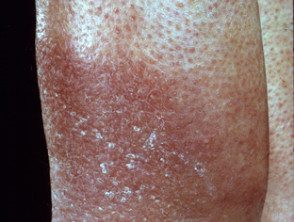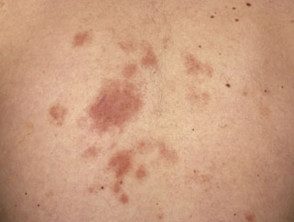What are mucinosis?
Mucinosis is a diverse group of rare skin disorders. All involve the accumulation of abnormal amounts of mucin. This is a gelatinous complex carbohydrate substance, called hyaluronic acid, which normally occurs as part of the connective tissue at dermis or middle layer of the skin. The abnormal deposits that occur in mucinosis can be located or extended. They range from minor cosmetic discomfort to potentially serious conditions involving internal organs. The underlying cause of this group of disorders is not well understood.
Mucinosis

Reticulated erythematous mucinosis

Pretibial myxedema

Follicular mucinosis
Extensive or generalized Mucinosis include:
- Scleromyxedema
- Lattice erythematous mucinosis
- Scleroedema
- Follicular mucinosis
- Cutaneous lupus mucinosis
- Pretibial myxedema associated with thyroid disease.
Localized mucinosis include:
- Lichen myxoedematosus (papular mucinosis)
- Acral persistent papular mucinosis
- Mucinous nevus
- Myxoid or digital mucous cyst
- Focal cutaneous mucinosis (see pathology of focal cutaneous mucinosis): a harmless solitaire injury less than 1 cm in diameter that can be removed by surgery excision if required.
- Angiomyxoma: a benign tumor that can arise individually or in numbers. Multiple lesions may indicate the Carney complex in which benign tumors can develop in the heart.
Mucin deposits also occur as a result of other skin disorders (secondary mucinosis).


